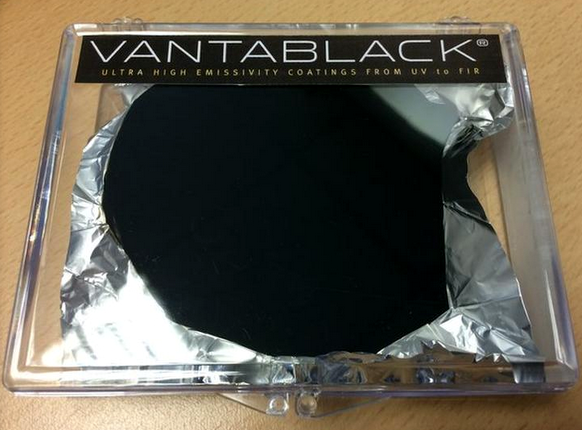There's a new black in the world, and it's called Vantablack.
Did you know there are scientists who work toward making colours deeper and richer? Surrey Nanosystems in the UK, for instance, has announced it recently developed a "super black" material. But it's not just a little darker than typical black colours; it's thought to be the blackest black known to man.
Vantablack was created with electro-optical imaging and target-acquisition systems in mind. The colour material can be used in telescopes to reduce stray light and help astronomers see faint stars, because it's capable of being applied to temperature-sensitive structures such as aluminium and can coat components like optical sensors and apertures.
"Vantablack is a major breakthrough by UK industry in the application of nanotechnology to optical instrumentation. Its ultra-low reflectance improves the sensitivity of terrestrial, space and air-borne instrumentation," said Ben Jensen, the chief technology officer at Surrey NanoSystems, in a press release.
READ: Wireless power delivery being tested in new Tesla tower this year
Surrey NanoSystems' scientists used a low-temperature carbon nanotube growth process to develop Vantablack. In fact, it took two years of testing in order to form a material that could be applied to aluminium structures and pyroelectric sensors. The final result was a colour that can absorb 99.96 per cent of incident radiation, the highest-ever recorded.
Jensen said Surrey NanoSystems is now scaling up production for its first customers in the defence and space sectors, and it has even delivered the first orders of Vantablack.

